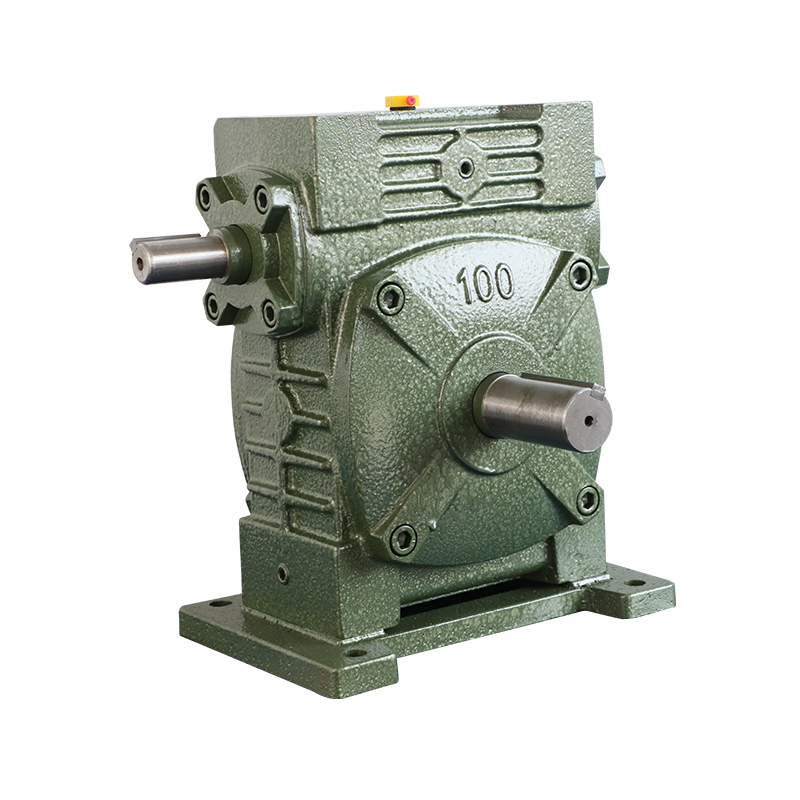When discussing how a WP worm gear reducer works with apps in terms of control and automation, it generally involves integrating the mechanical component with digital control systems and automation technologies. Here’s an overview of how this integration typically works:
In automated systems, the WP worm gear reducer is usually coupled with an electric motor. The motor’s speed and torque are controlled by a programmable logic controller (PLC) or other control systems. The gear reducer adjusts the motor’s output to provide the desired speed and torque for the application.
For precise control over motor speed and performance, a variable frequency drive (VFD) can be used. The VFD adjusts the frequency and voltage supplied to the motor, which in turn controls the speed and torque transmitted through the WP worm gear reducer. This setup allows for dynamic adjustments based on real-time requirements.
Automation systems often use sensors to monitor various parameters such as speed, position, and load. These sensors provide feedback to the control system, which can then adjust the operation of the motor and gear reducer accordingly. For example, a position sensor can ensure that a conveyor belt or actuator is in the correct position, with the gear reducer providing the necessary torque to achieve this.
In a closed-loop control system, feedback from sensors is used to continuously adjust the control signals sent to the motor. This allows the gear reducer to operate at optimal performance and maintain precise control over the application. The control system makes real-time adjustments based on the feedback to ensure accuracy and efficiency.
Modern automation systems often use control software or apps to manage and monitor operations. These apps can interface with the PLC or other controllers to adjust settings, monitor performance, and troubleshoot issues. The WP worm gear reducer’s performance parameters, such as speed and torque, can be adjusted through these control interfaces.
Some advanced systems allow for remote monitoring and control via apps. This capability enables users to manage and adjust the gear reducer’s operation from a remote location, providing flexibility and convenience. Remote access can be particularly useful for monitoring performance, diagnosing issues, and making adjustments without needing to be physically present.
Control systems often collect data on the performance of the WP worm gear reducer, including metrics such as operational hours, load conditions, and maintenance needs. This data can be analyzed to optimize performance, predict maintenance needs, and improve overall system efficiency.

In more advanced setups, the gear reducer may be part of an Internet of Things (IoT) network, where data is collected and analyzed in the cloud. IoT platforms can provide insights into performance trends and help with predictive maintenance, ensuring the gear reducer operates efficiently and reliably.
The control systems used with WP worm gear reducers are often programmable, allowing users to set specific parameters and operating conditions. This programming can include defining speed profiles, torque limits, and operational schedules, enabling the gear reducer to adapt to various application needs.
For complex applications, custom control logic can be developed to manage the gear reducer’s operation. This logic can be implemented in the PLC or control software, providing tailored control strategies that meet the specific requirements of the application.
Automated systems may include safety interlocks and emergency stop functions that are integrated with the control system. These safety features ensure that the WP worm gear reducer operates within safe parameters and can be shut down immediately in case of an emergency.
The control and automation systems must comply with industry standards and regulations to ensure safe and reliable operation. This includes adherence to electrical and safety standards relevant to the application.
The WP worm gear reducer works with control and automation systems by integrating with electric motors, PLCs, VFDs, sensors, and control apps. This integration allows for precise control, remote monitoring, and data analysis, optimizing performance and efficiency in automated applications.

 English
English русский
русский bahasa Indonesia
bahasa Indonesia
